SCM of 7-eleven
-Distribution SCM
-SCM Information System
-Inventory Management
-Transportation Management
-Supply Contract
Conclusion
1927 : In Dallas, Texas, an employee of Southland Ice Company, John Jefferson Green, started selling milk, eggs and bread from an improvised storefront in one of the company's ice houses. It provided the fresh food such as bread and milk and this gave birth to the convenience retailing.
1946 : The name of the stores was changed to 7-Eleven to reflect their hours of operation—7 am to 11 pm, which at the time was unprecedented.
1962 : A store near Texas opened for twenty-four hours as an experimental administration. Later 24-hour stores were successively opened in Las Vegas, Fortworth and Dallas.
1991 : A Japanese convenience retailing store named, “Ito-Yokado” bought majority of the Southland’s shares.
2005 : 7-eleven’s shares were wholly bought and it became the all-Japanese company.



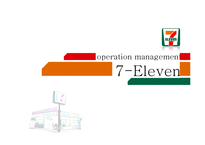
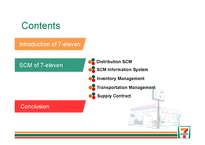
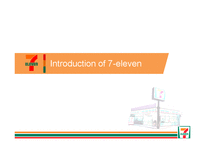
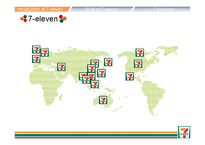
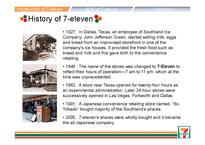
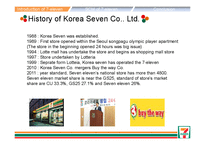
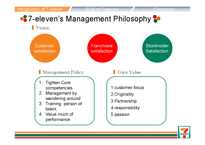
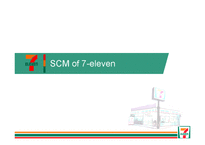
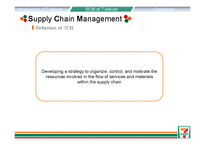
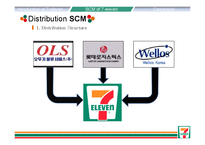
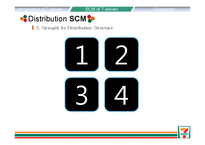
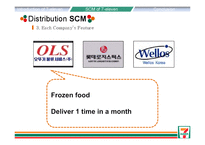
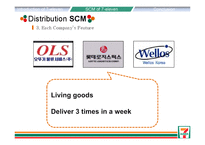
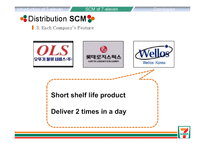
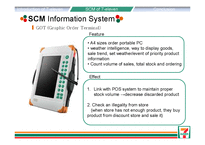
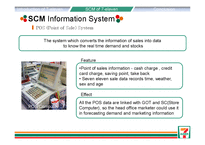
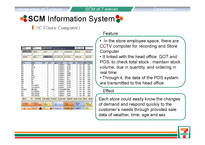

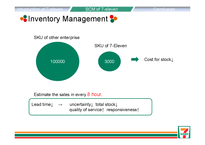
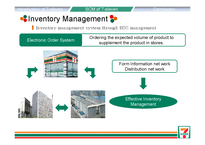
 분야
분야


